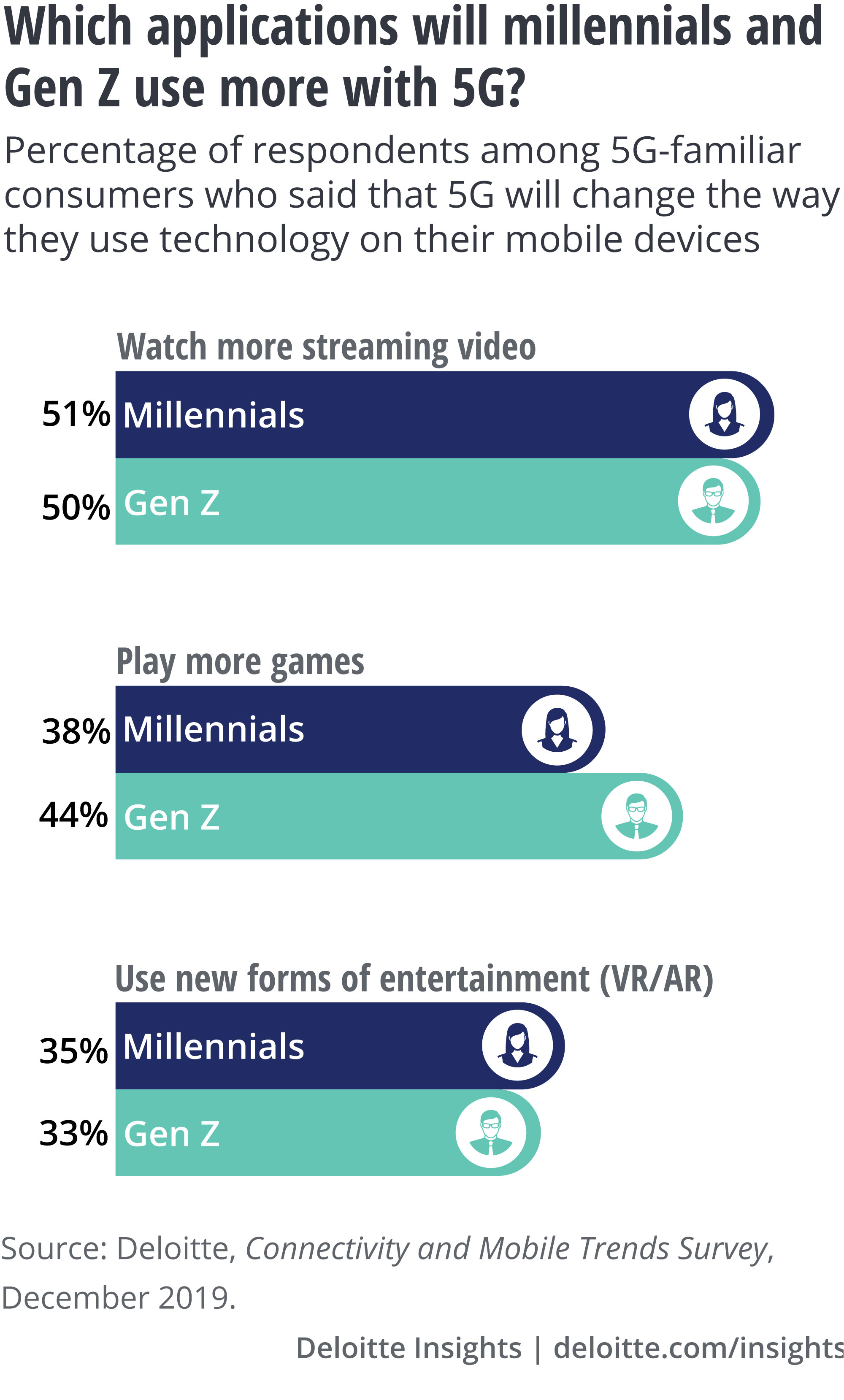How will millennials and Gen Z use 5G? Mobile video streaming, gaming, and digital reality are top choices
3 minute read
09 April 2020
Younger consumers, committed to their mobile devices, are looking forward to using 5G technology mostly for streaming video, VR/AR entertainment, and multiplayer gaming with social features.

While some people are looking forward to 5G so they can more easily stream on their home networks, younger consumers envision taking most of the technology’s benefits with them wherever they go. Deloitte’s recent Connectivity and Mobile Trends Survey suggests that once 5G is broadly available, millennials and Generation Z (consumers approximately 14 to 36 years old) could drive demand for a variety of consumer technologies.1
Close to half of millennial and Gen Z respondents said that 5G will allow them to watch streaming video on their mobile devices more than ever before. The number of millennials watching digital and online video has already surpassed those watching traditional TV, and many of them tend to watch videos offered through social platforms.2 Our survey found that these younger consumers also typically own the largest number of connected devices. All of these factors point toward increased streaming activity among millennials and Gen Z when 5G is widely available.
When it comes to gaming, smartphone is emerging as the most-preferred device, surpassing PCs and consoles. Deloitte’s Digital Media Trends survey (13th edition) finds that about 73 percent of Gen Z and 67 percent of millennials play games on their smartphones.3 Because both Gen Z and millennials are “social savvy,”4 it’s unsurprising that they have greater affinity for multiplayer games that incorporate social features. These games have morphed into social avenues where they can hang out virtually with families and friends.
Learn more
Explore the Thinking Fast series library
Subscribe and never miss a charticle
Learn more about Deloitte’s services
Go straight to smart. Get the Deloitte Insights app
With 5G literally in their hands, roughly one-third of millennials and Gen Z said 5G will change the way they consume entertainment services such as virtual reality (VR) and augmented reality (AR). For example, 5G’s low latency and higher bandwidth can help deliver a mobile VR gaming experience on par with what consumers typically experience over the internet via high-end home PCs.5 Similarly, in the field of education, VR/AR promises to provide immersive learning experiences, allowing students to collaborate virtually with peers and co-create content across digital media platforms.6
With 5G likely to change how millennials and Gen Z use their mobile devices, telecom and media companies can address these generations’ evolving needs by:
- Analyzing how social interactions and connections shape the preferences of millennials and Gen Z.7 This can help companies determine which product, brand, advertising, and marketing partnerships they need to meet these consumers’ needs and expectations.
- Tracking and learning from feedback and reviews that younger consumers provide across multiple platforms.8 With this information, companies can select the device, app, and content partnerships that will best provide differentiated and personalized user experiences.
By following these steps, telecom and media companies can begin addressing the unique needs of two demographic segments that are shaping the future of consumer technology usage.
© 2021. See Terms of Use for more information.
More from the Technology collection
-
The changing face of North America’s tech ecosystem Article5 years ago
-
M&A premiums surge as pool of targets subsides Article5 years ago
-
Talent and workforce effects in the age of AI Article5 years ago
-
Tech Trends 2025 Article4 months ago
-
TMT Predictions 2025 Article5 months ago











